EA Sports College Football 25 review: Worth the 11-year wait
EA Sports College Football 25 has finally arrived 11 years after NCAA Football 14's release. Plenty has changed in that time: The adoption of the College Football Playoff, the expansion to a 12-team playoff this year, changes to the transfer portal, NIL's introduction, and more show just how different things are now.
What's remained constant, however, is people's love for the sport and their desire to dive in and play an up-to-date college football video game.
Without spoiling our entire review, CFB 25 is a strong entry into the franchise's storied history and provides an excellent foundation for future releases.
Presentation
From the moment you fire up your first game you can tell CFB 25 was made by people who understand what makes college football so special. Team entrances are electric, the stadiums are gorgeous, and the combination of licensed songs like "Tsunami" and "Mo Bamba" paired with team fight songs and crowd noises make every game very immersive.
Bigger stadiums have the added bonus of becoming extra disruptive to visitors. I dealt with the classic squiggly lines and incorrect play art, and I struggled to make changes at the line of scrimmage while playing on the road as lesser teams but was able to leverage my own home-field advantages while using Texas at Darrell K Royal Memorial Stadium.
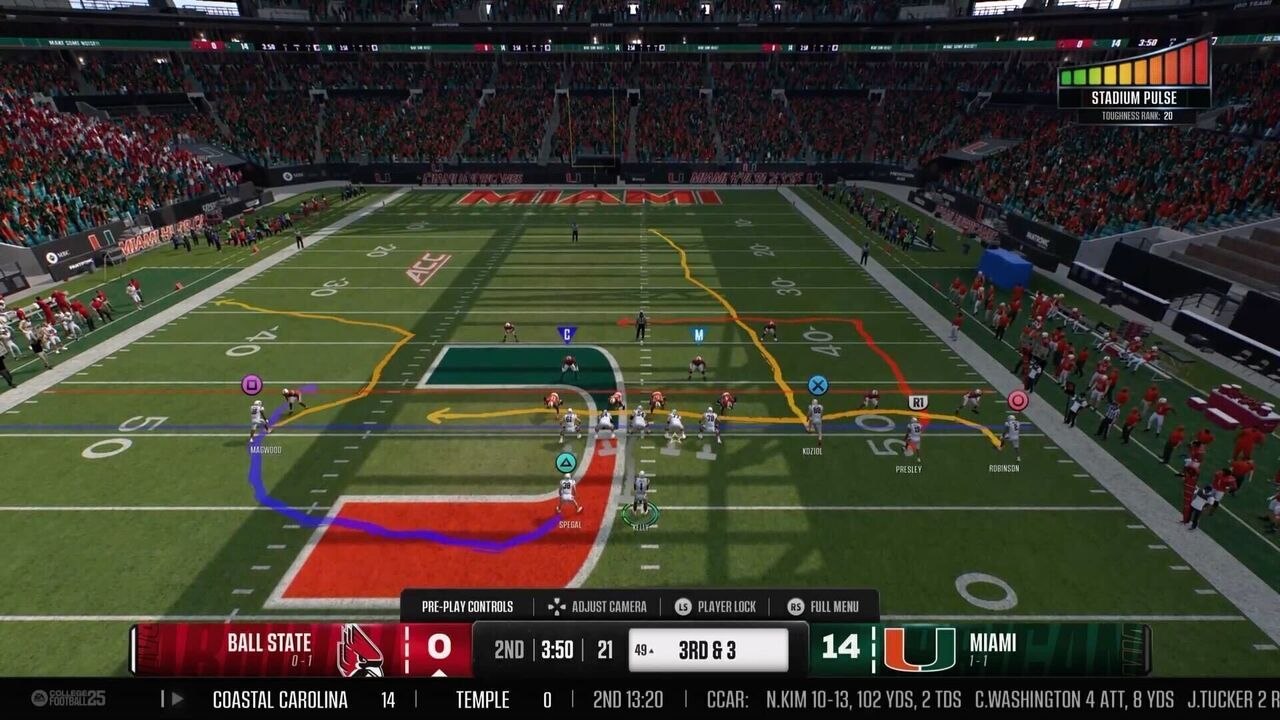
Most games will have Rece Davis, Jesse Palmer, and David Pollack providing commentary, while high-profile games feature Kirk Herbstreit and Chris Fowler. Both sets are strong with plenty of team-specific lines littered throughout the matchups. There was the occasional strange dialogue choice, but, generally, it's a step up compared to many other video game commentaries, and it's augmented by sharp graphical overlays during and after games.
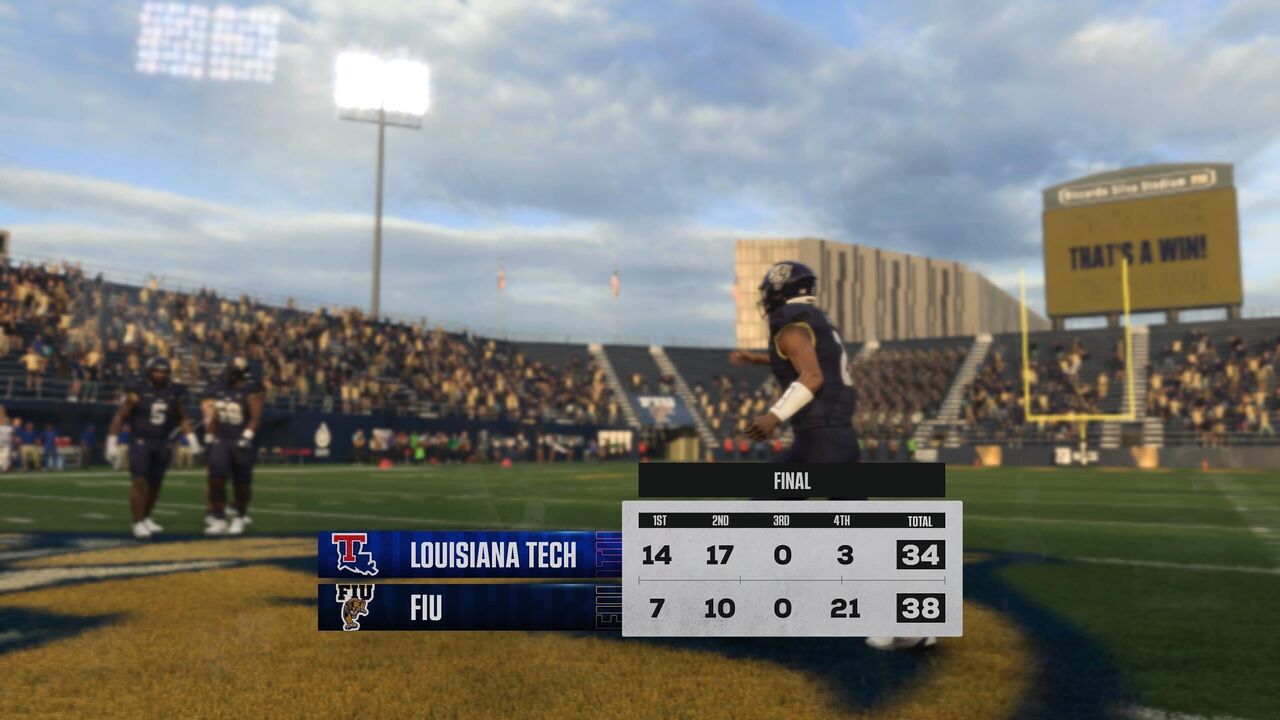
While CFB 25 features fewer face scans than the Madden NFL series does, players who are scanned in look very accurate. Even those who don't have a scan look like real people rather than uncanny faces.
Gameplay
It's not an exaggeration to say CFB 25 has some of the best football video game gameplay I've experienced. I primarily played as Texas, Ball State, Stanford, Colorado State, and FIU. Outcomes don't feel overly scripted, animations are fluid and coherent, and there's a good balance between user skill and player ratings when determining the end result of each play. There were some buggy interactions, but they were rare and never game-breaking.
I quickly noticed the benefits of the revamped passing system while using Texas quarterback Quinn Ewers. I was able to layer the ball to all three levels of the field and saw pass trajectories I've only dreamed of in the past. Those benefits were much harder to come by when using lower overall quarterbacks. It will take some time to get accustomed to the new passing mechanics, but once you get used to the timing, it will unlock a whole new set of capabilities.
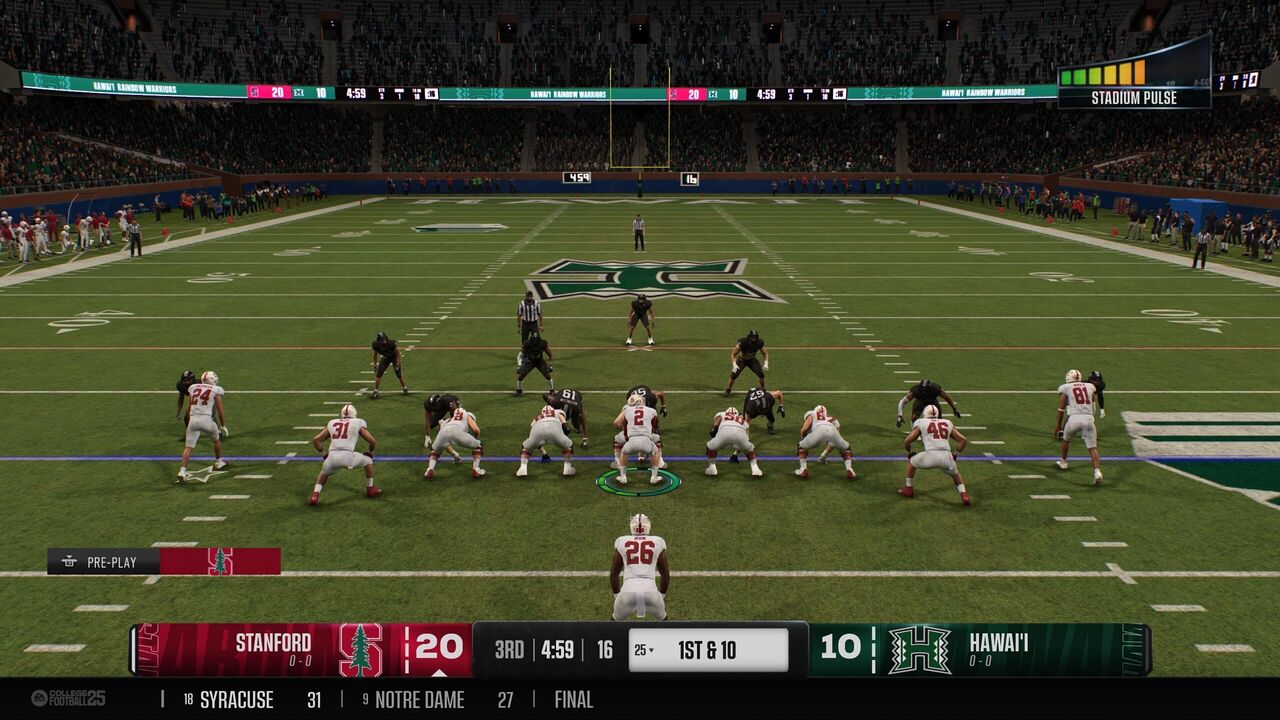
Running the ball feels good when blockers get to their spots, but defensive players beat offensive linemen a little more often than I'd prefer, both when I was playing offense and defense. While this can be somewhat reflective of reality, it meant there were certain matchups where passing on almost every down would be more optimal, as rushing would fruitlessly lose yards. A small tweak to gameplay sliders would likely alleviate some of this, as would getting further into a dynasty where I could recruit better talent, but a bit more balance in the trenches would help me feel more balanced as a player.
Kicking takes a lot of focus and is much more difficult than fans of the Madden NFL series have come to know. A rapidly moving sideways bar sets your accuracy, while a hold-and-release meter determines power. I missed multiple field goals and extra points while learning the timing for the new system and anticipate many more misses, particularly on longer attempts from the hash marks.
Abilities impact almost every play, regardless of whether you're on offense, defense, or special teams. These function closer to NBA 2K's badge system than Madden NFL's X-Factor abilities, giving situational boosts rather than guaranteed outcomes with bronze, silver, gold, and platinum versions of each ability. CFB 25 displays a brief image of an ability's icon beneath a player when it activates, but neither the visual key nor the ability effects ever felt intrusive.
Dynasty
I spent the bulk of my time in the Dynasty mode playing as Texas, Ball State, and FIU. Those three programs provided vastly different experiences both on the field and when recruiting.
I booted up a Dynasty file as the Longhorns first. My personal goals were to make the new 12-team College Football Playoff and to sign a top-10 recruiting class while simulating the majority of the season. I missed out on the first thanks to some abysmal simulation luck landing me a .500 record but was able to leverage Texas' considerable recruitment resources to land the top recruiting class in the nation, including the top overall prospect. That success also translated to the transfer portal where I landed Arizona standout Tacario Davis.
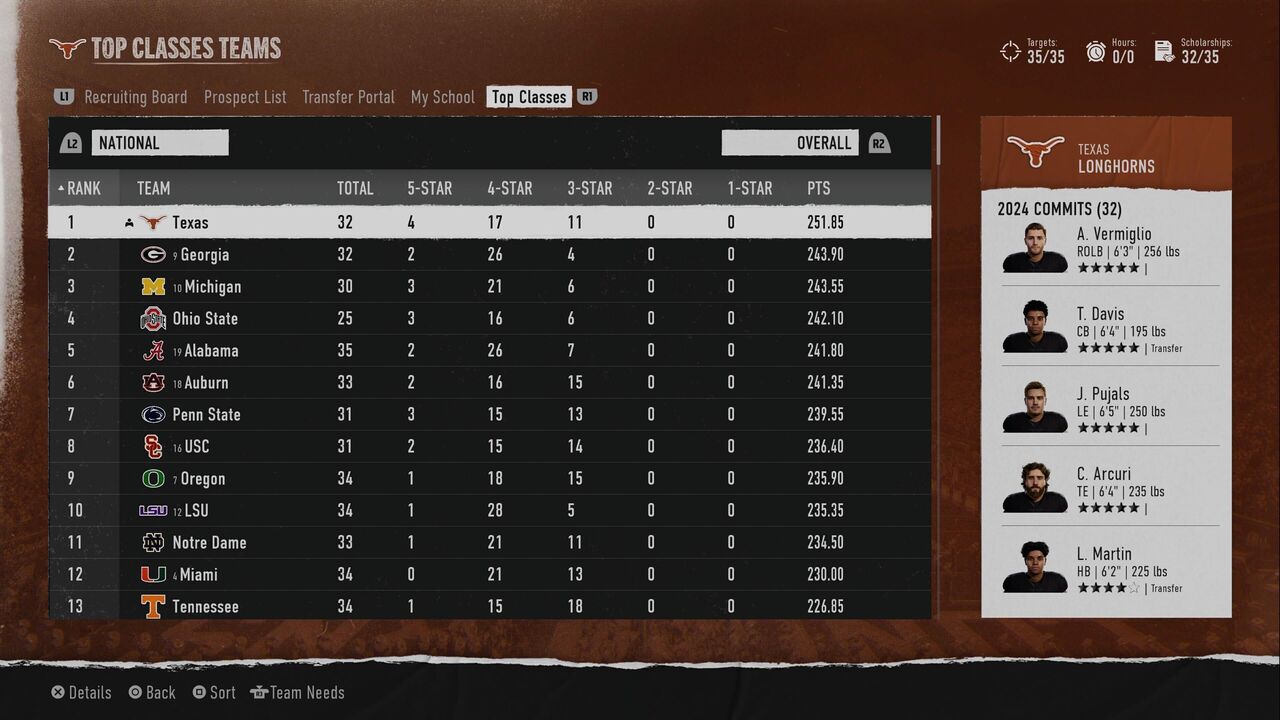
Things were much less exciting while using the programs with notably less prestige. I was able to land several three-star prospects thanks to a good combination of recruiting abilities and hyper-focusing on them, but four- and five-stars were almost entirely locked out from the beginning.
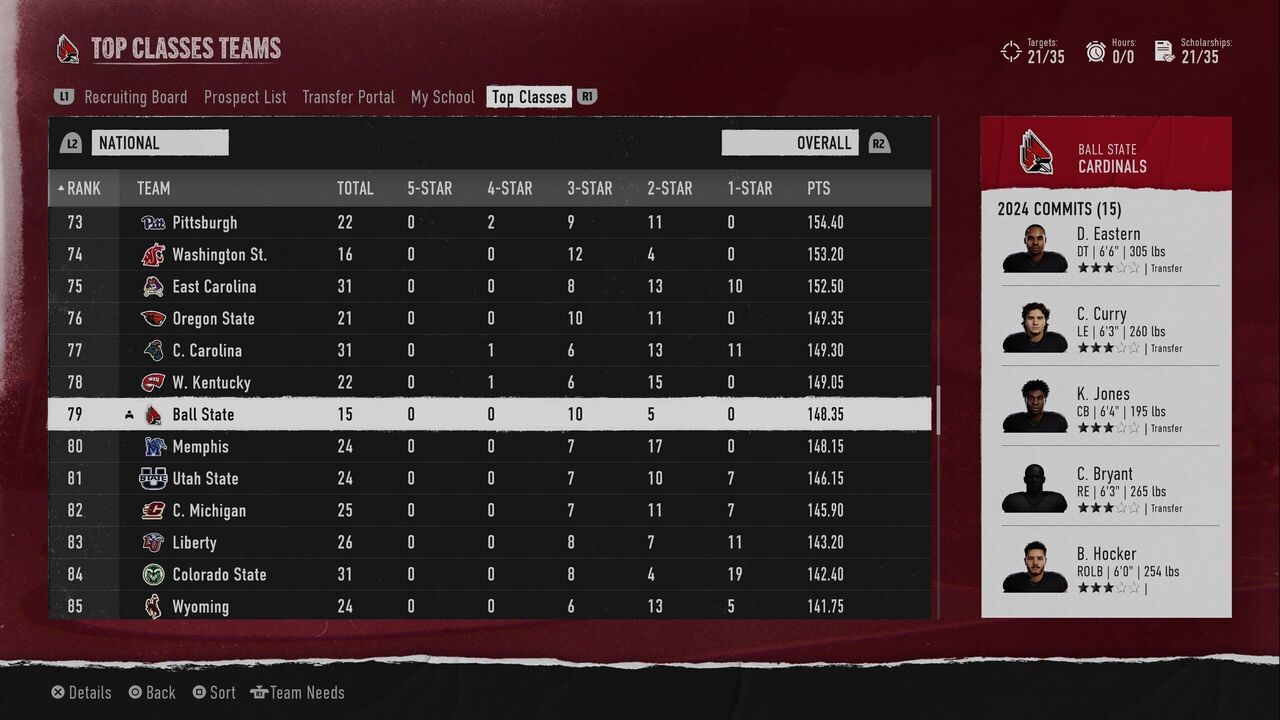
The coach progression system felt like it scaled at a reasonable rate with every program while set to normal speed. However, I had to be careful with each upgrade I selected since there's no way to max out every skill tree or refund your points if you make a mistake.
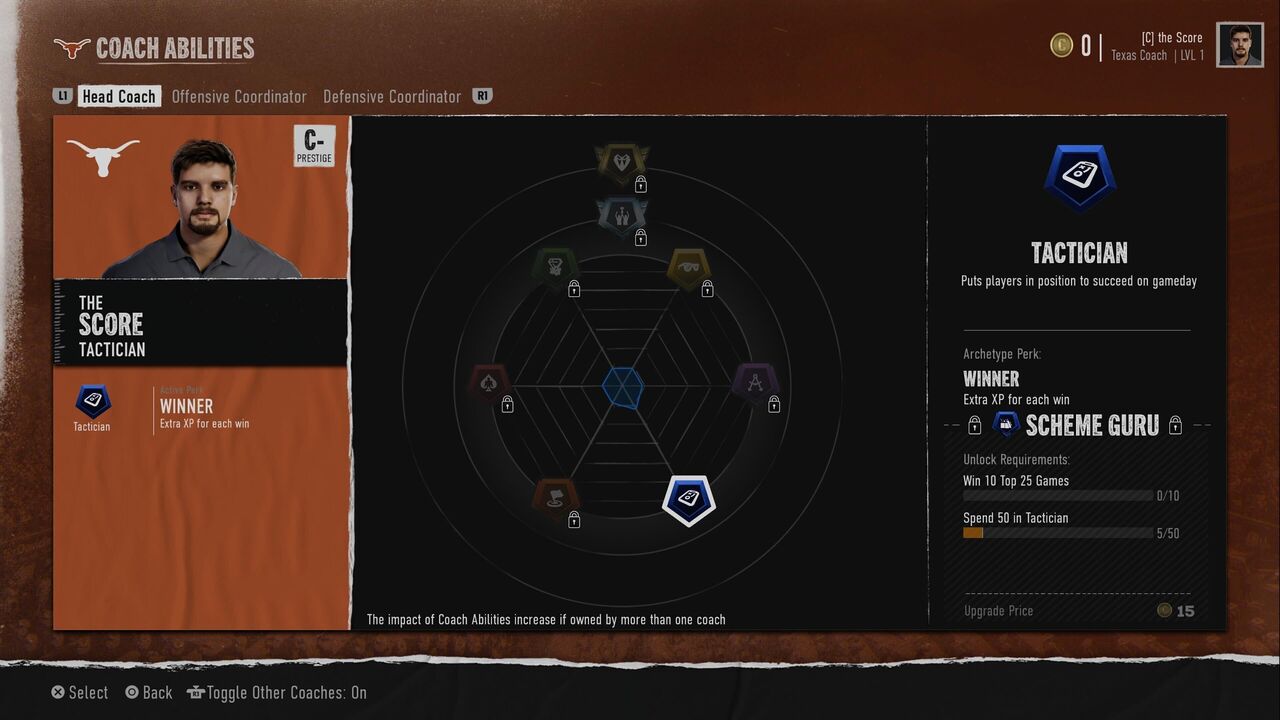
I didn't qualify for the new College Football Playoff format during any of my first few seasons with the game, but it was still a lot of fun to check rankings as they became available and follow along with each game's result. Twelve teams vying for the national championship created several interesting matchups thanks to the simulation's unpredictability.
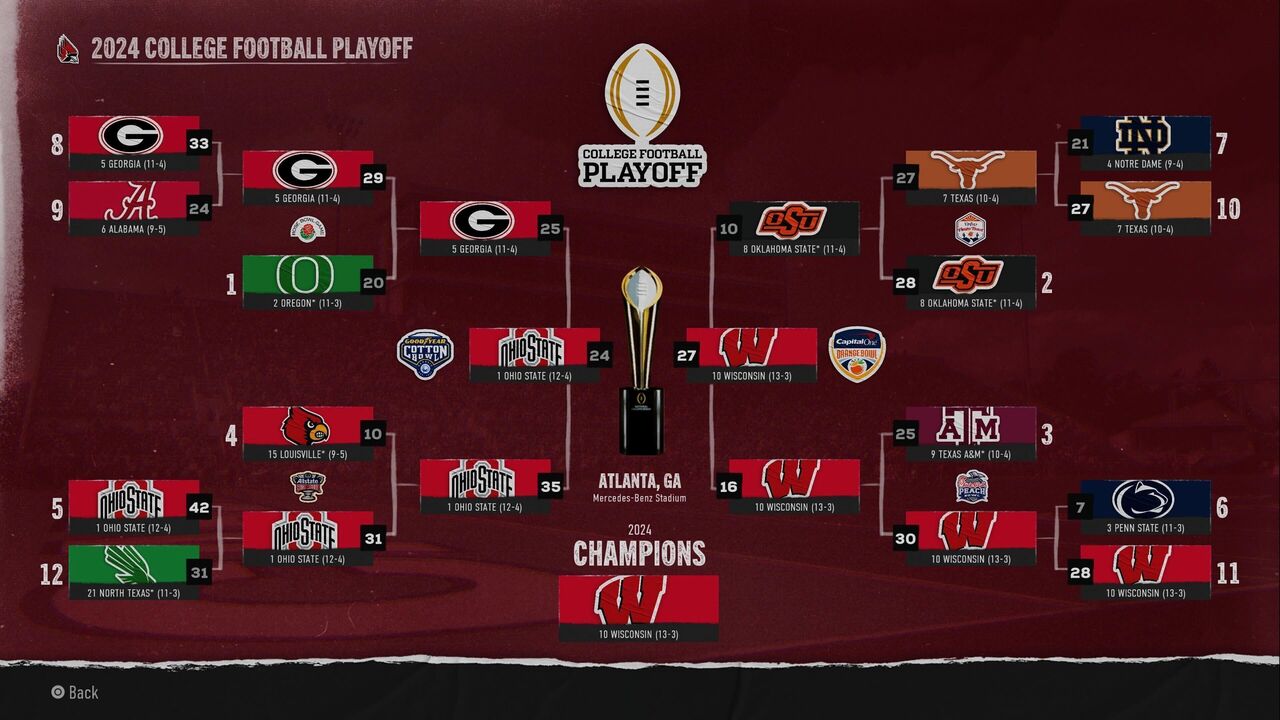
Road to Glory
Things start off differently in the Road to Glory mode than longtime players are accustomed to, as there's no high school gameplay. You choose your recruit type, create your player, answer questions to get an ideal pitch, and then immediately see how interested each school in the country is in your recruit based on your decisions.
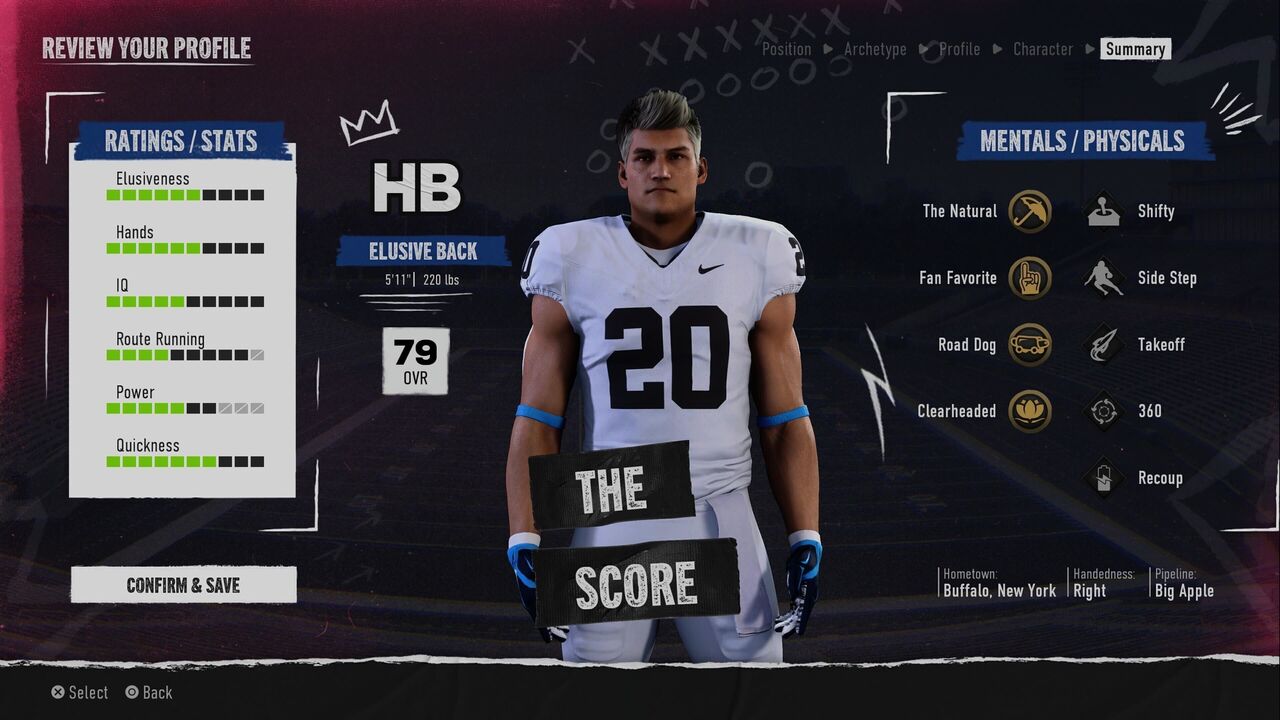
I elected to have my scrambling quarterback commit to Stanford, beginning as the program's third-string passer after selecting the option to be a three-star prospect. Through practices and scenarios I eventually built up enough coach trust to take the backup job in my freshman year and then won the starting role thanks to some big trust gains heading into the second game of my redshirt freshman season.
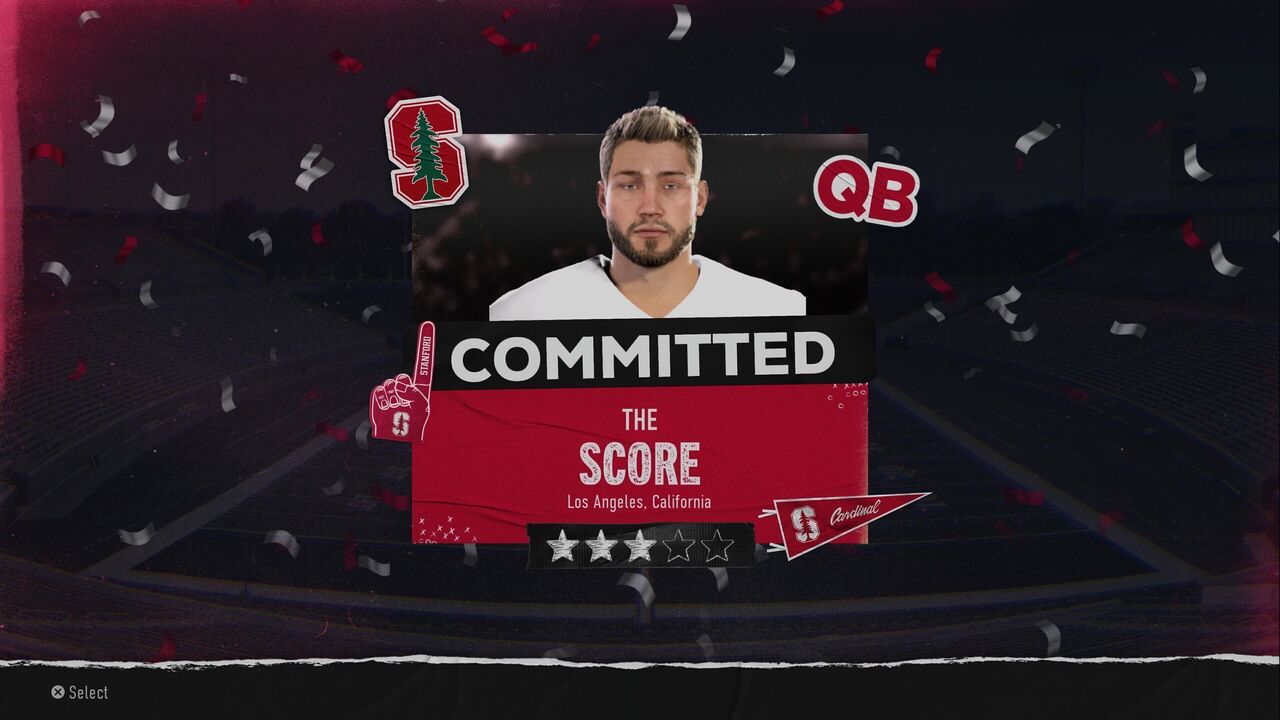
Over time, I was able to get enough skill points for a few upgrades, but meaningful ratings bumps took a bit longer than I'd like. Starting off as a more sought-after recruit will be one of the only ways to become a 90 overall or better, though it's still not a particularly fast process for an elite recruit.
As a five-star elusive running back, I committed to Colorado State to immediately jump in as the team's starter. I had the same weekly agenda responsibilities as my lower ranked quarterback did, but I felt the impacts more in this second run. The balance between increasing my test readiness, leadership, personal brand, training, and wear-and-tear recovery was stressed much more as I took more damage as a frequent ball carrier than as a quarterback. I always felt like I was making some progress overall, but I had to make sacrifices to one or more categories on multiple weeks.
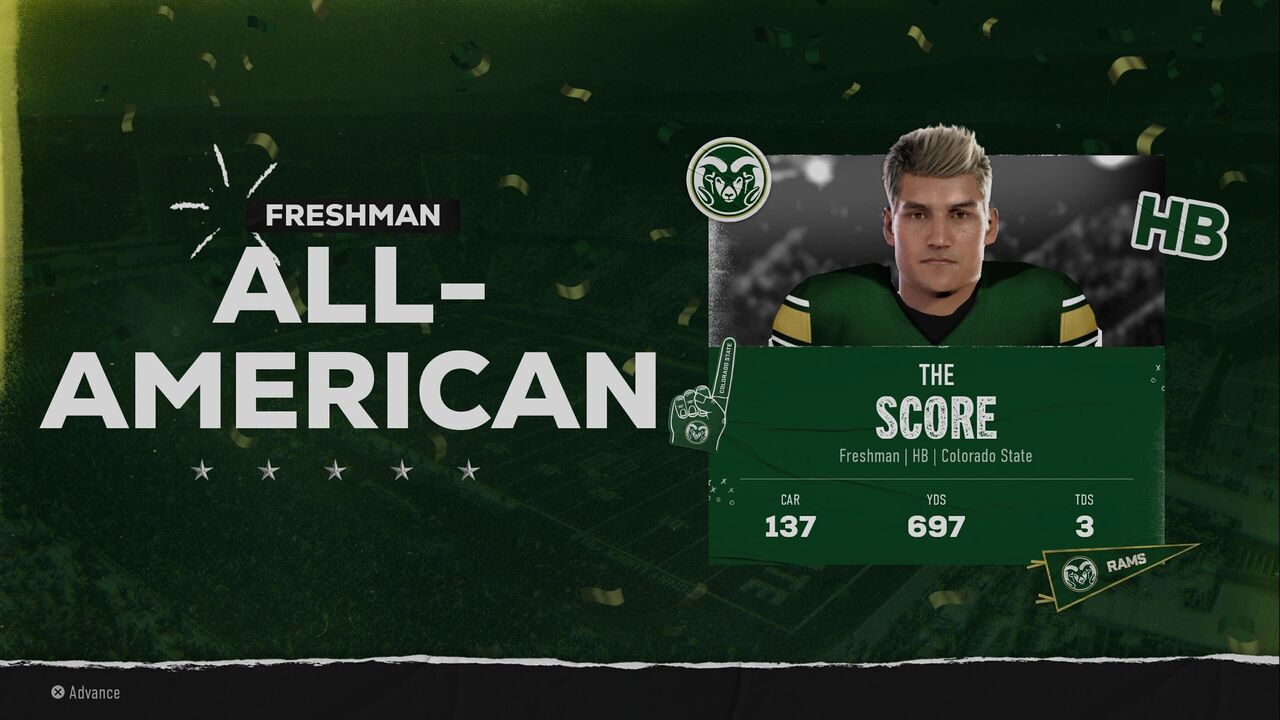
Customization
Custom conferences are once again available, with any shifts you make requiring a conference to have between four and 20 teams. I didn't move any programs around in my limited number of seasons, but it's simple to execute at the beginning of a season. You can also customize your nonconference schedule with any opponent that's available for a given week.
While the names of your recruits can be edited when they join your program, their numbers are unfortunately locked in. While this could be tweaked in a future update, the current limitations are a bit frustrating. It's possible this was a concession made to prevent users from creating real players in future recruiting classes. Vitals and ratings for existing players can't be edited at any point.
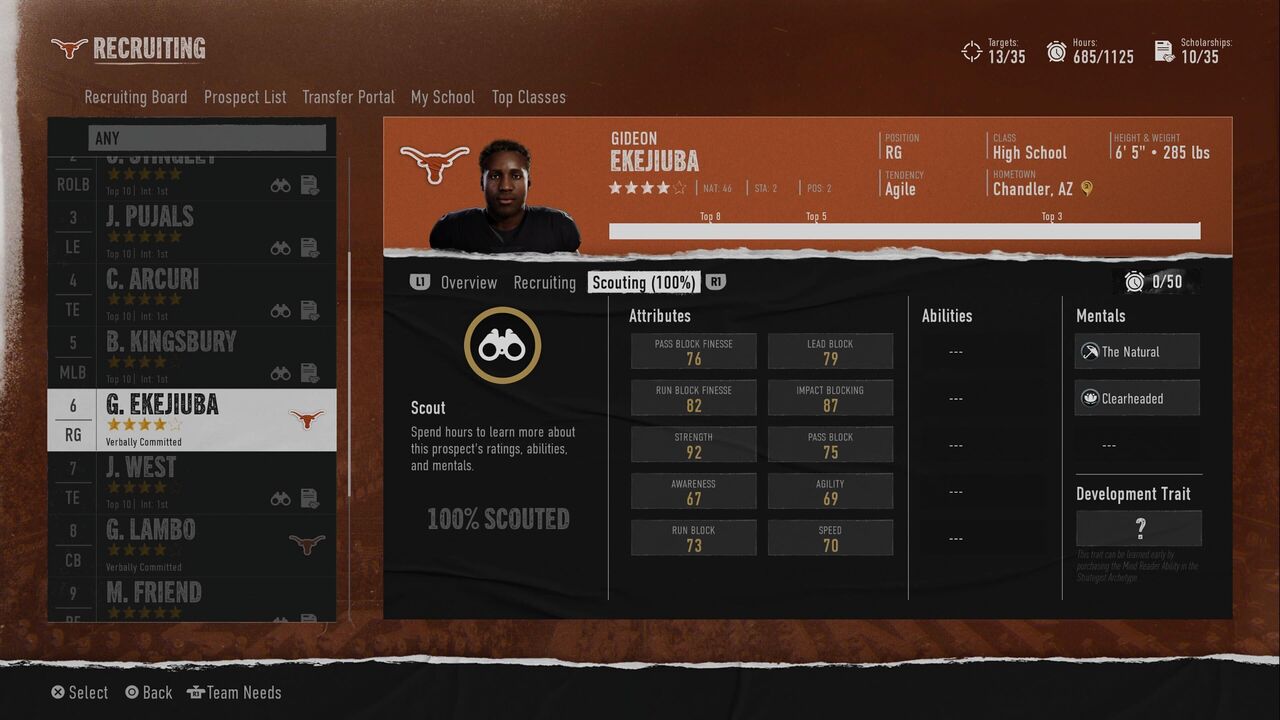
Another compromise was made when it comes to transferring your classes to Madden NFL 25, as that functionality isn't available in this iteration. In an ideal world this would be included in future releases, but it may take some time to sort out licensing agreements between EA Sports, college players, and the NFLPA.
Customization shines, however, when equipping your players with gear. Both Dynasty and Road to Glory provide a plethora of options, ranging from hoodies to cropped jerseys to arm sleeves and more. I was able to make my players look almost exactly as I wanted when they took the field.
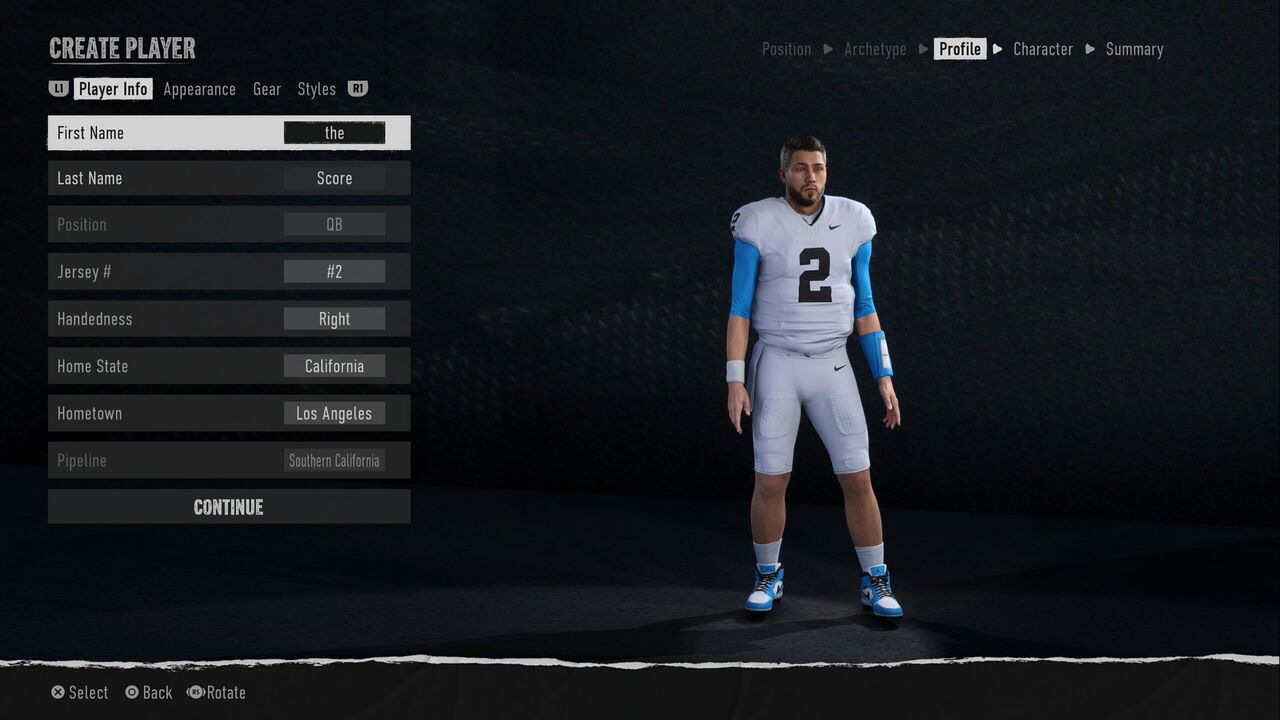
Extra customization options are available through the Team Builder website. Users are able to create their own custom teams and then import them into the game for use in private online dynasties. Some options available include custom logos, five different uniforms, and even different helmet textures. You're also able to have Nike, Adidas, or Under Armor as your uniform provider, which will provide brand-specific jersey types and fonts. Note that an existing program must be replaced in order to import a Team Builder school.
Verdict: 9/10
There's a lot to love about EA Sports College Football 25, especially when considering how long it's been since a college football game was last available. It's not perfect, with room to improve in aspects like Road to Glory progression and some minor gameplay adjustments. However, CFB 25 provides a multitude of ways to play with plenty of depth and replayability, and it beautifully captures the pageantry of college football. It lays a superb foundation for future editions of the franchise to build on.